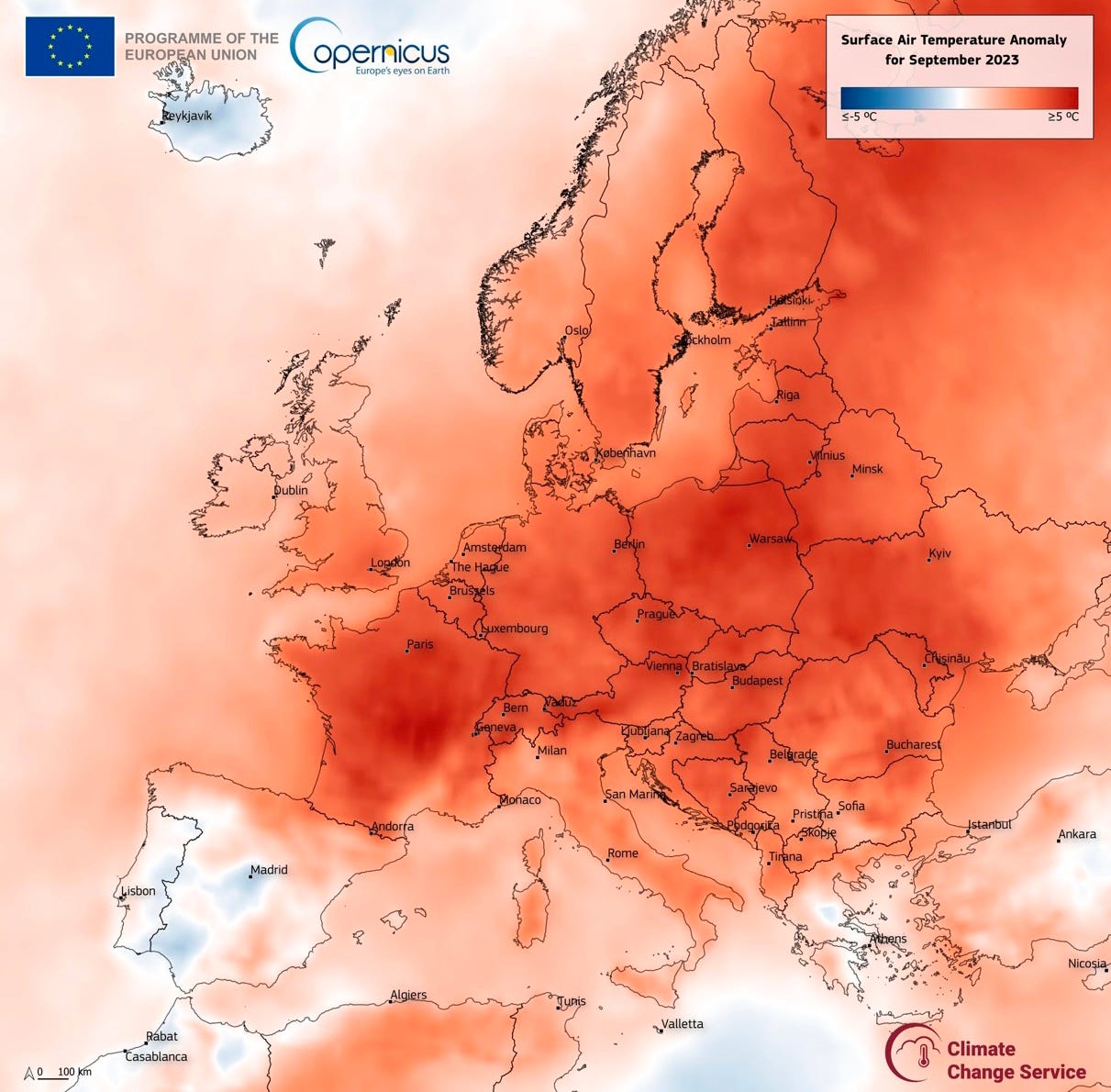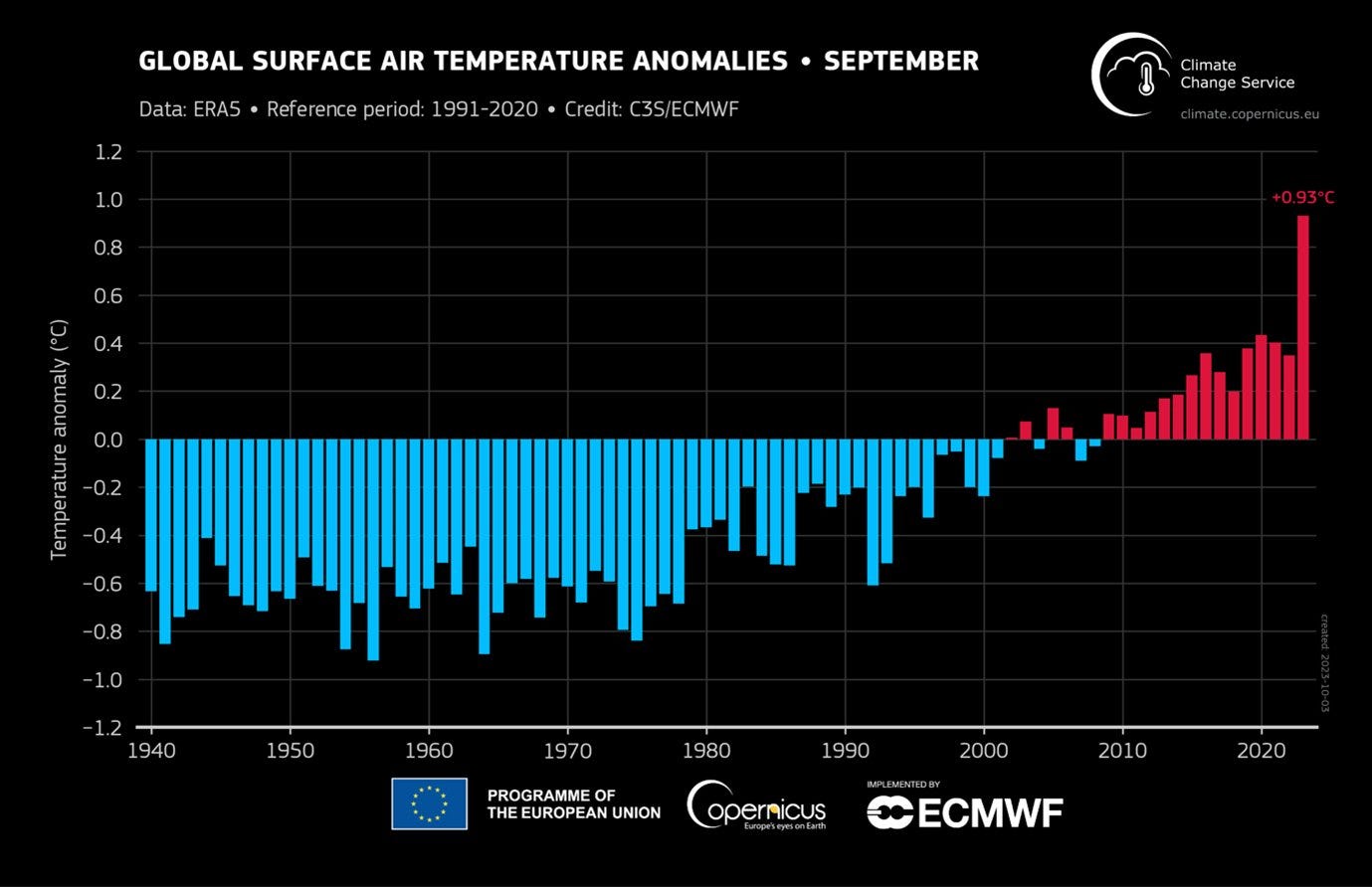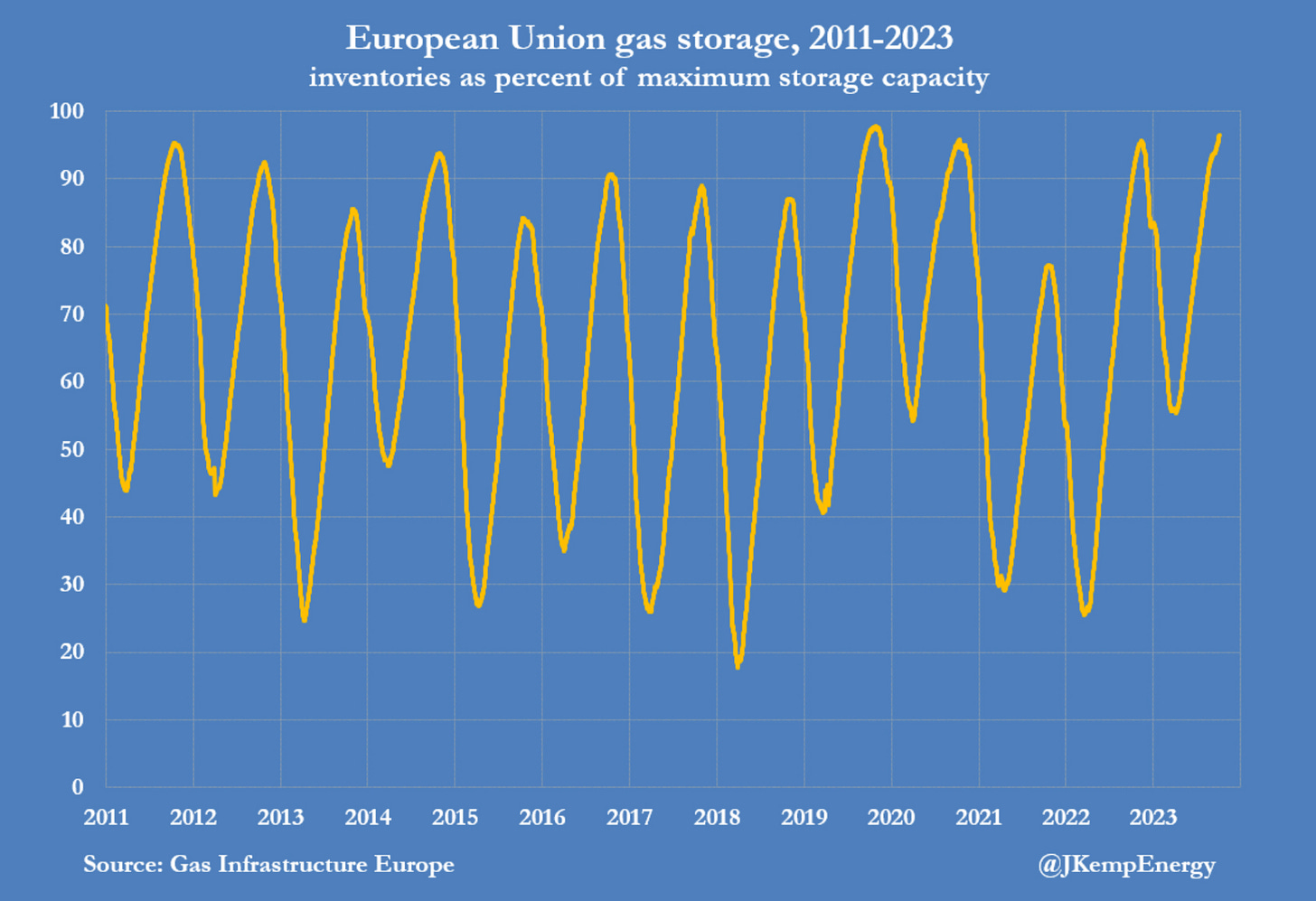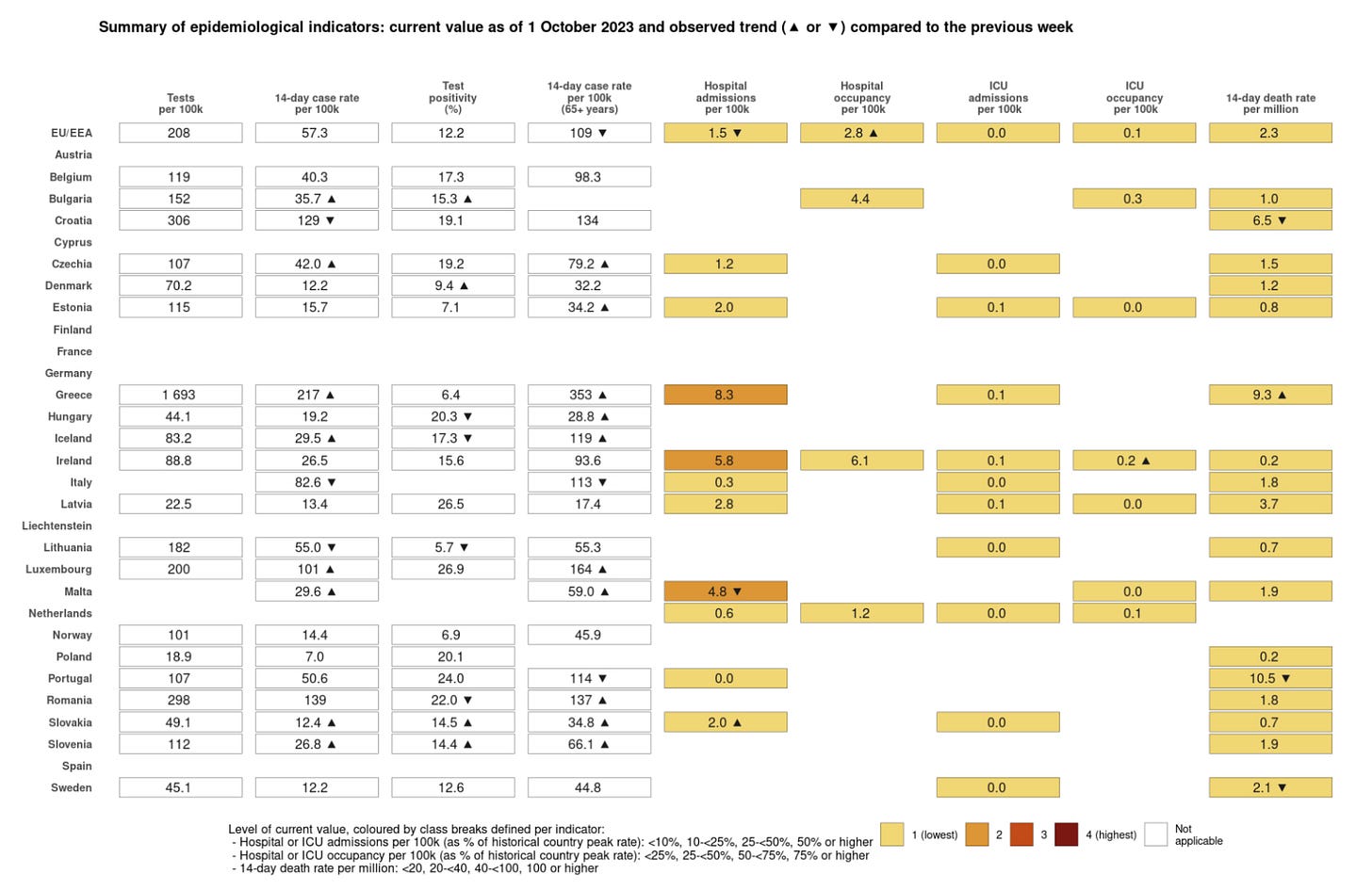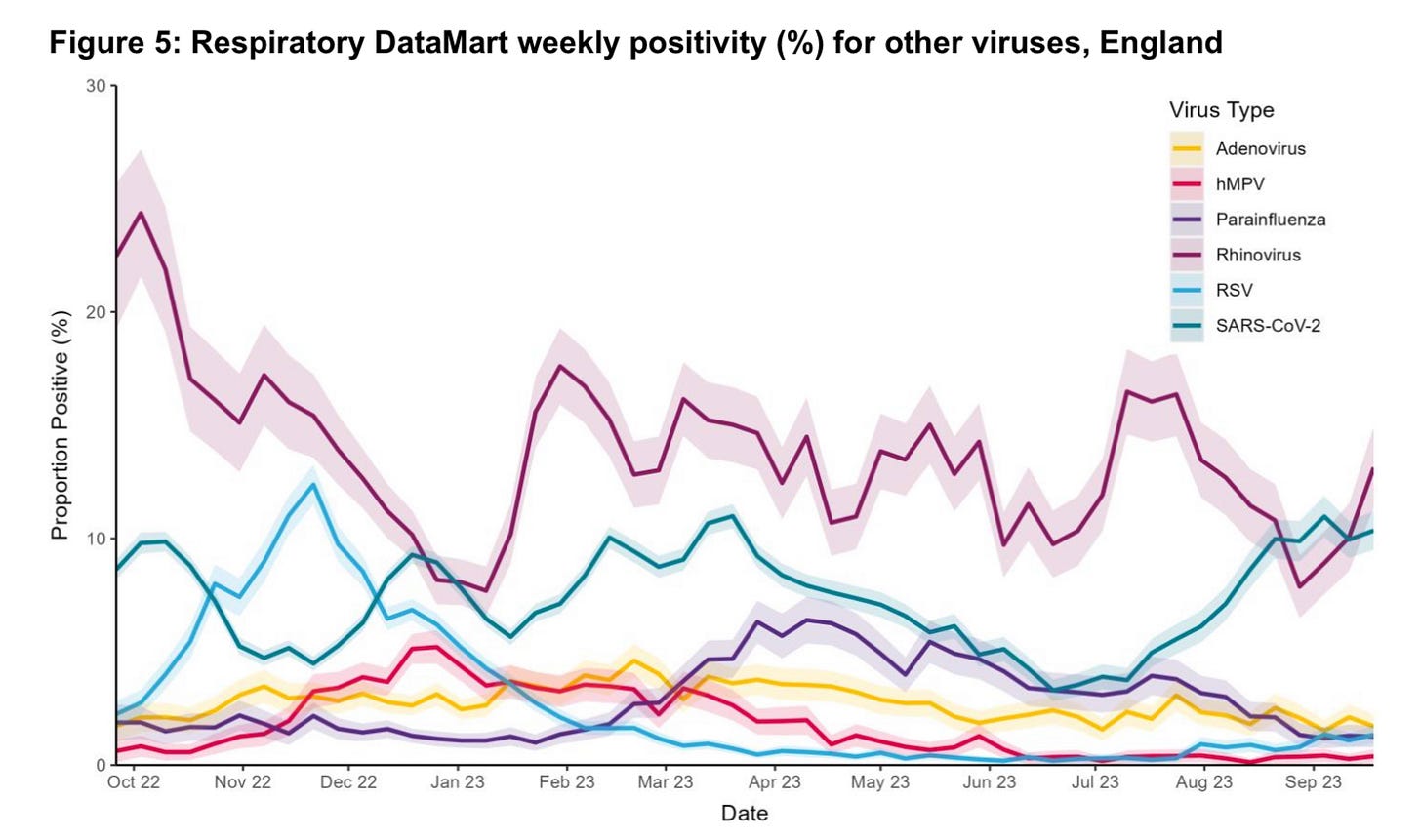🇮🇱/ 🇵🇸
🇩🇰 🇸🇪
Both Denmark and Sweden are now advising against all travel to Gaza and against all non-essential travel to Palestine and Israel due to the security situation as fighting continues between Israeli forces and Hamas.
🇩🇰
32 Danish efterskole students from Fjellerup are in Israel on a study tour and are now scrambling to get back home. The school says all of the grade 10 students are safe at their hotel in Jerusalem. But the school adds that with the erupting war and a mass scramble to leave the country, it is proving extremely difficult to find a plane to get them back to Denmark.
-
The Danish Armed Forces said over the weekend that 12 Danish soldiers are deployed in the conflict zone in Israel. It says all 12 are accounted for and are uninjured. The army didn’t say why the soldiers were there only saying that they were in the region deployed on a variety of missions.
🇫🇮
The Finnish Ministry of Foreign Affairs has confirmed a dual Finnish/Israeli citizen has been injured in the fighting between Hamas and Israel. The ministry didn’t reveal any other information including what the person’s condition is.
🇨🇦
A Canadian may have died in the violence that has broken out in Israel. Global Affairs Canada said on Sunday that it is aware of the reports of the possible death and that two other Canadian citizens are missing. The agency is working with local authorities to try and get more information and confirm if the reports are true. It says there are well over 1,000 Canadian citizens registered in Israel and Palestine.
🍃Environment & Energy⚡️
🇪🇺
It wasn’t just Denmark and Finland that experienced a record-breaking heat wave in September, it was felt all over Europe. Both Nordic nations recorded the hottest September on record. And according to the EU’s Copernicus Climate Change Service, last month was also the hottest September ever for the entire European continent. The average temperature in Europe last month was 1.1°C hotter than the previous record set in September 2020.
Interestingly, the record-breaking heatwave that hammered Europe in September was not felt over the entire summer. Summer 2023 will go down as the fifth hottest summer in Europe.
The World Meteorological Organization says it was the hottest September on record for the entire planet and not by a little but by a lot. The agency says 2023 is on track to become the hottest year ever recorded.
WMO Secretary-General Prof. Petteri Taalas:
“Since June, the world has experienced unprecedented heat on land and sea. The temperature anomalies are enormous, far bigger than anything we have ever seen in the past. Antarctic winter sea ice extent was the lowest on record for the time of year. What is especially worrying is that the warming El Niño event is still developing, and so we can expect these record-breaking temperatures to continue for months, with cascading impacts on our environment and society. WMO will work with our partners in the scientific community to try to understand what additional factors are contributing to this exceptional warming.”
Antarctic sea ice extent remained at a record low level for the time of year and sits at about 9% below average.
🇩🇰
The clean-up continues after last week’s record-breaking cloud bursts in Region Midtjylland. A number if families have been displaced due to their homes being flooded during the massive downpour. According to DR 14 families have been forced out of their homes in Silkeborg alone.
Frederik Sjøvslev Søgaard is a claims adjuster at the insurance company Tryg and he spoke to Denmark’s national broadcaster.
“It's quite unusual. Normally there is water damage in parts of basements, but in this case, the damage is far greater and the flood waters breached even the ground floors. That is why the number of people forced out of their homes is so high.”
It will likely be months for those families to return to their homes if they can return at all. The insurance company is setting up mobile homes for those families where they will likely have to live for the next six to eight months.
“It is a major process when you have been hit by a flood. The water must be removed, and then the wet material must be removed, the floor must be taken up, and the contents must be removed. Then it must be dehumidified, and if there has been sewage, it must also be disinfected.”
Last week, several months’ worth of rain fell in a matter of a few hours with up to 70 millimeters of rain in parts of Jutland.
-
This week Copenhagen’s Children and Youth Committee will decide whether red meat should be excluded, or not, from meals served in cafeterias and other eateries in schools and educational institutions across the city. The idea is to reduce climate impacts by reducing red meat use.
-
The Danish Road Directorate (Vejregler) has set a goal of reducing greenhouse gas emissions by 60% for the building of all future concrete structures. The agency is already using a new cement mixture and implementing design changes to reduce the carbon footprint of a new highway bridge being built near Vejle by 30%.
The new, stricter emissions requirements on the building of concrete structures were introduced this year and will be part of the Hillerød highway construction, the extension of the Kalundborg highway and the extension of the E45, all of which are part of the Infrastructure Plan 2035.
-
Future recipes may contain ‘Danish grass’ as an ingredient. In Denmark, the Innovation Center for Organic Agriculture is working on a process to refine grass to remove the proteins and then feed it to pigs. The center says that grass protein is on par with soy. It would also be extremely environmentally friendly as grass is easy to grow and protects the soil, absorbs nitrogen and carbon, and doesn’t require any pesticides. By growing grass, it also diminishes the need for soy imports and the associated emissions. It also reduces the leaching of nitrogen into the surrounding environments.
The grass is harvested by the center and then finely chopped up. Then it goes through a process where it is crushed to get the juices out. The juices are then heated up until the juice turns into small grains and et voila grass protein. The process has worked so well with animal feed that five new grass refineries are being built.
The Center’s Chief Consultant Erik Fog spoke to DR to say that government funding is crucial.
“Government support is necessary to get the production of protein from grass going. This has been the case with wind turbines and biogas. This is how it is with new technologies when they have to go out and are to be commercialized.”
He says the next step is to keep improving the refining process so it can be available for humans.
-
During last winter’s energy crisis, the temperature inside all public buildings in Denmark was capped at 19 degrees. This winter that mandate no longer applies but that isn’t stopping some municipalities from reintroducing it. Aarhus has capped the thermostat as has Lejre and Faxe kommunes among others. Several other municipalities have increased the heat up but only by two or three degrees. Many of Denmark’s municipalities are facing a cash crunch and the rationale is less about saving energy and more about saving money.
For its part, the Danish Energy Agency is continuing to encourage people to conserve energy during the winter months to come. It says the energy crisis isn’t over yet and every bit of energy conservation will help us weather the winter ahead.
🇪🇺⚡️
As the winter months approach the European Union has a record amount of natural gas in storage. Gas inventories are sitting at 96.3%. This along with new LNG import terminals, a major increase in wind and solar power, and gas storage in Ukraine should provide a hefty cushion against any surge in demand should Old Man Winter put Europe in the deep freeze. Energy experts say that barring anything unforeseen the chances of a repeat of last year’s energy crisis is pretty minimal.
That said, the continued war in Ukraine continues to have impacts not just on global inflation but also on natural gas prices, which are still about 55% higher than the ten-year average before the war.
🇫🇮 🇪🇪
One of those unforeseen events may be happening now. The Balticonnector gas pipeline running between Finland and Estonia suddenly shut down early on Sunday. Pipeline operator Gasgrid Finland said on its website that it noticed “an unusual drop in pressure in the sea gas pipeline between the two countries shortly before 2 a.m. Based on the findings, it was suspected that the sea pipeline between Finland and Estonia was leaking. The valves in the sea pipe are now closed and the leak is thus stopped. Gasgrid Finland Oy is currently investigating the matter in cooperation with Elering.”
Elering is the Estonian half of the pipeline operator.
In another update posted late Sunday the pipeline operator said preparations were underway to inspect the pipeline for damages. That process could take a few days.
“If it appears that the unusual pressure drop is due to a leak that caused damage to the pipe, repair work may take at least several months depending on the nature of the damage. Gasgrid Finland has assessed the extent of gas released in the suspected leak, and will report the results to environmental authorities in accordance with the Environmental Protection Act after the results are confirmed.”
Gasgrid adds that Finland’s energy systems are in good shape and the floating Inkoo LNG terminal can supply the gas to cover any shortfall.
“The terminal has the capacity and the ability to deliver the gas Finland needs in the coming winter as well, even though gas consumption is typically higher in winter seasons.”
The 77-kilometer pipeline runs from the Gulf of Finland before crossing an arm of the Baltic just west of Russia before ending in Estonia.
🇪🇺 🇩🇰
As Europe leans on wind energy to drive the energy transition to renewables the industry is facing a huge challenge. European wind energy companies say they are being squeezed from two sides. One is China, which is offering wind turbines much cheaper than companies in the EU can. On the other side is the United States, which offers huge tax deductions luring away green energy companies and their employees.
At a recent wind energy conference in France, the CEO of TotalEnergies Patrick Pouyanné bluntly summed the situation up.
“There is a collective choice to be made in relation to whether we want to prioritize the price of electricity or having jobs in Europe.”
European wind energy companies don’t have to look far for one example of how this could play out. 10 or 15 years ago the European solar panel industry was wiped out as production moved to countries like China or to developing nations that could offer rock-bottom production costs and hefty government subsidies.
Green Power Denmark Managing Director Kristian Jensen says if Denmark, and the EU, don’t ensure a level playing field then it could be game over.
“In addition to losing our second largest export product, we also risk that our dependence on oil and gas from the Middle East and Russia will turn into a dependence on Chinese technology in the same way as has happened with solar cells.”
Vestas, one of the world’s largest wind turbine manufacturers, has been lobbying politicians about the need to protect the green energy sector.
Group Senior Vice President Morten Dyrholm spoke to EnergiWatch in the aftermath of the recent wind energy tender disaster in the UK where there wasn’t a single bid.
“We need to talk about the value that offshore wind turbines represent. They do something for the climate, reduce consumers' electricity bills, create jobs, and energy independence. But there is no focus on that. It's all about wringing as many kroner out of offshore wind as possible. And so we end up where we are now.”
🇸🇮 🇭🇷
A nuclear reactor in Slovenia had to undergo a controlled shutdown over the weekend after a small leak was discovered. The plant provides electricity to both Slovenia and Croatia. Once the shutdown is completed crews will have to assess the containment area around the reactor, find the damage, and then repair it before the nuclear power plant can be brought back online.
🦠COVID🦠
🇪🇺🦠
Of the 21 European nations still reporting COVID data to the European Centre for Disease Prevention and Control about half are seeing increasing infection numbers. Hospitalizations, ICU admissions, and virus deaths are also on the rise in some countries as well.
The Czech Republic, Greece, Iceland, Luxembourg, Slovakia, and Slovenia are seeing increasing coronavirus infections across all age groups. Bulgaria is reporting rising infection numbers among those under the age of 65. While Estonia, Hungary, and Romania are all seeing case numbers head upward but just among vulnerable seniors over 65.
The ECDC says sentinel surveillance among family doctors is showing that respiratory infections have increased across most countries reporting data last week. It says the “steepest increases” have been among young children. The agency adds at the moment respiratory infection numbers remain roughly in line with what was reported at the same point last year. Remember last fall and winter were defined by influenza, COVID, and RS virus infection waves hitting more or less simultaneously.
The positivity percentage is trending upward in Bulgaria, Denmark, Slovakia, and Slovenia.
Just a reminder that due to abysmally low testing numbers, the ‘true’ number of infections is a complete mystery across the EU and among individual countries.
Overall across the European Union and greater European Economic Area COVID-related hospital occupancy increased last week. Slovakia reported rising infection-related admissions while Ireland saw an increase in intensive care occupancy. The hospital situation continues to be serious in Greece even though numbers remained static week to week.
Only one country, Greece, reported an increase in overall COVID deaths. But the ECDC notes that six countries are reporting rising coronavirus deaths among vulnerable seniors with those increases now being seen for four straight weeks.
On the variant front, just 14 countries met the pathetically low threshold of reporting at least 10 sequenced positive test results over a two-week period. Based on that incredibly narrow window XBB.1.5 and its variants remain dominant in Europe.
🇩🇰 🇸🇪
The number of confirmed BA.2.75 variant infections has increased to 47 in Denmark while Sweden is now at 44. This is based on a very minute amount of COVID testing and sequencing being done in both countries so the ‘true’ picture remains unknown.
🇩🇰 🇸🇪
The ‘Greater Copenhagen Task Force’ will meet tomorrow (Tuesday) to discuss efforts to boost the economy after the pandemic. The task force was struck in 2021 in a collaboration between the Greater Copenhagen Organization, Danish Industry, the Øresund Bridge Consortium, along with the Danish and Swedish governments. The mission of the task force is to facilitate economic opportunities and better integration between the capital region and southern Sweden.
🇬🇧
The BA.2.75 COVID variant seems to be driving infection numbers up in the UK. According to the UK Health Security Agency, the country has a rolling seven-day average of 2,290 new infections per day, at the end of June it was 271. In the last week around 16,000 people have tested positive.
The UKHSA said recently that the new coronavirus strain was so widespread across the county that it was everywhere.
💉 🦠
Could the next big vaccine breakthrough be here? American scientists have developed a trivalent nasal vaccine against mumps, measles, and COVID that has been broadly effective in trials on mice and hamsters.
“Therefore, MMS is a highly promising next-generation vaccine candidate against COVID-19. Furthermore, any of the three component vaccine viruses can be quickly modified when a new important SARS-CoV-2 variant appears. This MMS vaccine is an efficacious, broadly protective next-generation COVID-19 vaccine candidate, which is readily adaptable to new variants, built on a platform with a 50-year safety record that also protects against measles and mumps.”
The measles, mumps, and rubella vaccine (MMR) has been one of the safest and most successful vaccines in human history. Having a nasal vaccine would also be a game-changer in tackling the coronavirus. To date, COVID vaccines are injected and while offering strong protection against severe infections resulting in hospitalization and death they don’t offer much protection in a person’s airways against an airborne virus. A nasal vaccine would.
In a paper published in the scientific journal The Proceedings of the National Academy of Sciences (PNAS) in tests on hamsters the new MMS vaccine provoked stronger antibody protection than COVID monovalent vaccines. The maximum level of protection lasted for a good four months.
The paper can be found HERE.
🇺🇦/ 🇷🇺 War
🇩🇰 NATO 🇺🇦
Ukrainian President Volodymyr Zelenskyj will address the NATO Parliamentary Assembly via video link today. The assembly’s annual sitting is taking place in Copenhagen. Around 300 parliamentarians from the 31 NATO member nations are attending. They will discuss the security situation in Europe, the war in Ukraine, and other challenges facing the alliance. Danish Prime Minister Mette Frederiksen will also address the forum.
-
The Danish state will once again produce military-grade ammunition on Danish soil. With the war in Ukraine pushing ammunition supplies to the very limit in Europe the push is on to drastically increase the production of artillery shells and other ammunition. The Danish government has now bought back an ammunition factory in Northern Jutland that it sold back in 2008. The Krudten factory closed its doors for good in 2020 after the new Spanish owners threw in the towel.
Over the weekend Denmark’s Minister of Defense Troels Lund Poulsen announced the purchase and the restarting of ammunition production in Denmark.
“Russia's invasion of Ukraine, which has now lasted a year and a half, has put ammunition production in Europe under severe pressure. The situation is critical and it has made it clear to us there is a need to re-establish ammunition production in Denmark. We are now taking the first step towards that with the acquisition of the facilities in Elling. Ammunition supply is a national security interest. We need to try to find solutions in Denmark to contribute where we can. I would like to emphasize that it will take time before we are ready to start production, but it is also good that we are now taking a major step forward.”
In order to get production re-started a supply chain for all the required materials will have to be established. The new facility will also need staff so employees will have to be hired and one assumes they will also have to undergo a security screening.
Last spring, Defense and Foreign Affairs ministers across Europe launched a series of initiatives to bolster ammunition production in the EU as part of an overall strengthening of the defense industry.
🇸🇪 🇺🇦
Sweden has tabled its 14th weapons package donation to Ukraine. The package contains an unspecified number of 155mm artillery rounds, ammunition and spare parts for previously donated CV90 infantry vehicles, body armour, assault rifles, ATVs, winter gear, night vision scopes, stretchers, and satellite audio/video communications equipment, worth 1.7 billion Swedish kronor (about $212 million Cdn). Sweden will also cover the subscription cost for satellite communications.
The Swedish government also announced that it will extend its participation through 2024 in the British-led program to train Ukrainian soldiers. Swedish instructors have been training Ukrainians on techniques to safely clear mines and other explosive ordnance. 120 instructors from the Swedish Armed Forces will be tasked with continuing as trainers in Lithuania for at least one more year. Sweden is also opening the door to expanding its role in the training program and opening up training opportunities for Ukrainian soldiers in Sweden.
Last but not least, the Swedish Armed Forces have been tasked with conducting a thorough assessment of the possible donation of JAS 39 Gripen fighter jets to Ukraine. The results of the analysis are to be completed and handed over by November 6.
Swedish Defense Minister Pål Jonson/Twitter
Regardless of the report’s findings, the Swedish government has put a caveat on any fighter jet donations. It says Gripen fighters will only be donated when Sweden is a member of NATO.
-
A blood donation bus donated to Ukraine by Sweden’s capital region is getting put to good use. Region Stockholm says since the bus arrived in Ukraine last May 597 donors have given blood on the bus.
The region’s Blood Donations Communications Coordinator Ingrid Engström helped drive the bus from Sweden to Ukraine last spring. She says the bus is currently operating around Lviv. She says the need for blood donors in Ukraine remains very high.
“When they set up the bus, people line up to give. The need for healthcare is constant, blood is needed daily. People have diabetes and cancer, and accidents happen there as well, in addition to the fact that there is also war.”
Region Stockholm has also donated an ambulance, transit buses, medical supplies, and equipment including x-ray machines to Ukraine.
🇫🇮
A Finnish court has sentenced a man to a ten-month suspended sentence for aggravated money laundering. The man was found guilty of using fraudulently obtained Canadian and American credit cards to order household goods and electronics from online stores in Finland and then forwarding those goods on to Russia. Some €90,000 worth of goods had been sent on to Russia.
🇩🇰The Week Ahead Round Up🇩🇰
Monday, October 9:
A two-day conference called ‘A Light in the Darkness’ begins in Gilleleje in Northern Sjælland. The conference commemorates the 80th anniversary of the rescue of Danish Jews fleeing occupied Denmark during World War II. Denmark’s Queen Margrethe II will participate in a memorial ceremony on Monday night.
More information about the conference is HERE.
-
Odense has become the robotics capital and beginning today a new robotics pop-up store and exhibition opens on the city’s main pedestrian shopping street. The idea is to open up the world of innovation in robotics that takes place in the city but isn’t necessarily seen by the public. The exhibition on the gågade will be open until December.
More information HERE.
Tuesday, October 10:
In Roskilde, the new Center for Green Transition and Marine Ecology will be officially inaugurated. The facility will focus on better understanding the impacts offshore wind turbines have on birds, bats, other animals, and marine life.
The inauguration takes place at noon at Niels Bohr Auditoriet på Risø, Frederiksborgvej 399.
-
If fishing is your thing you should be headed to Aalborg tomorrow. A three-day fishing trade fair, billed as one of the most important fishing exhibitions in the world, opens on Tuesday.
The trade fair is at the Aalborg Kongres & Kultur Center, Europa Plads 4.
You can find more information HERE.
Wednesday, October 11:
A real estate summit focusing on sustainability will be held in Copenhagen on Wednesday. The summit is hosted by The Urban Land Institute the world’s oldest and largest network of real estate agents.
It will be held at the Danish Architecture Center, Bryghusgade 10, 1473 Copenhagen.
-
The ‘Symposia for a Just Future: Building trans-disciplinary alliances for climate justice in Europe' will be held in Copenhagen. The conference includes artists, NGOs, activists, and academics for a day of discussion.
It takes place at the Statens Museum for Kunst, Sølvgade 48-50, 1307 Copenhagen K
More information including the full agenda is HERE.
-
Have you ever wondered what an Icebreaker is like? On Wednesday the United States’ largest icebreaker the ‘Cutter Healy’ arrives in Copenhagen. The ship also functions as a floating laboratory. It will be open for tours beginning at 2:30 p.m.
You can find it at Havnekaj, Oceankaj, 2150 Copenhagen
Thursday, October 12:
For us expats living in Denmark who miss Halloween then circle Thursday on your calendar as the storied Tivoli amusement park in Copenhagen opens its doors for the Halloween season. The season of ghouls and goblins at Tivoli will run until November 5.
Tivoli’s website is HERE.
-
The Danish national men’s handball team will be playing a Euro Cup qualifier against Kosovo in Horsens.
You can buy tickets HERE.
-
If you want some laughs, English ex-pat Conrad Molden will be performing in Odense. The comic will direct his razor-sharp wit at his experiences adjusting to life in Denmark.
You can buy tickets HERE.
Friday, October 13:
It is culture night in Copenhagen. More than 200 museums, theatres, libraries, churches, ministries, parks, and other venues across the city will throw open their doors in the Danish capital’s biggest annual one-day cultural event.
You can find out all about it HERE.
-
Dining Week kicks off on Friday. Restaurants across the country taking part in the Nordic region’s largest restaurant festival will present special menus offering the absolute best culinary delights Scandinavia has to offer. Menus will be offered at special fixed prices. Dining Week lasts until October 22.
You can find all the details HERE.
-
The ‘Bricks - Per Kirkeby’ exhibit opens at the Arken Museum for Contemporary Art in Ishøj. 13 of Kirkeby’s brick sculptures, most never seen before, will be shown at the museum.
The exhibit takes place until February 25. You can find the museum at Skovvej 100, 2635 Ishøj.
More information HERE (in Danish)
Saturday, October 14:
The Danish men’s national team plays a football match against Kazakhstan at Parken in Copenhagen.
The game starts 8:45 p.m. at Per Henrik Lings Allé 2
It looks like tickets might be sold out so your next best bet is a ticket reseller.
-
Want to experience what traveling by rail was like in Denmark in the 1950s and 60s? Then head to Odense where the Train museum will be taking out one of its classic engines from the era along with historical coaches on a trip from Odense to Fredericia. The trip takes about two hours. There will be four trips on offer with the first train leaving at 2 p.m.
More information HERE.
Sunday, October 15:
If you want to say happy birthday to Denmark’s Prince Christian who turns 18 on Sunday then head to Amalienborg in Copenhagen. At noon the Prince and the entire Royal Family including Queen Margrethe II, will be out on the palace balcony where the crowd will sing happy birthday to the Prince.




